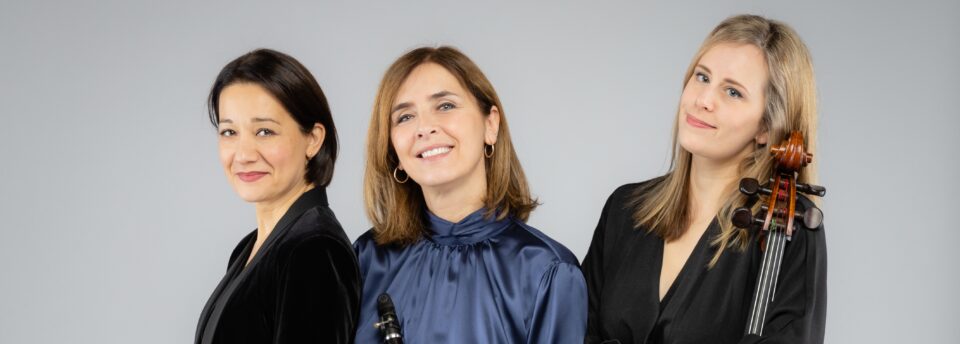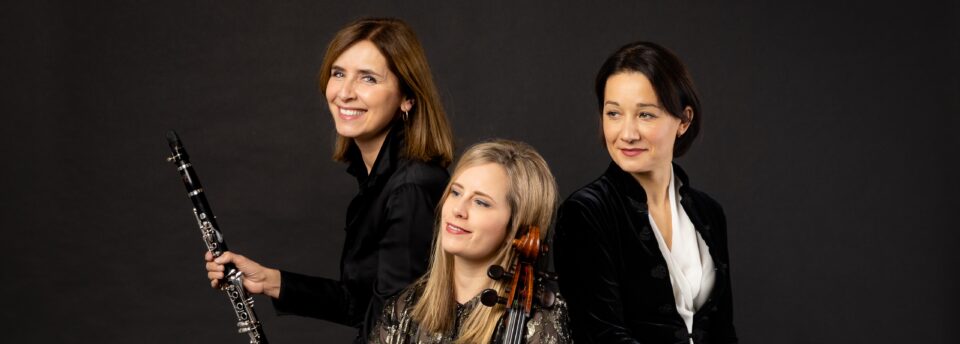English
« The lively and energetic performance of works by Beethoven and Brahms demonstrated the personal, beautiful and very distinctive sound that the Gauguin Ensemble has developed during many years and which propelled it to the summit of the Dutch chamber music scene ». Eric Bos (music critic)
Yfynke Hoogeveen, clarinet, Karlien Bartels, cello and Nata Tsvereli, piano together constitute the Gauguin Ensemble. Their personal expressiveness and musical symbiosis ensure a great demand at the Dutch concert platforms. The three musicians were trained at the conservatoires of Groningen, Arnhem, Paris, Vienna, Tbilisi and Amsterdam.
The Gauguin Ensemble has a tradition of frequently creating surprising and original programs that combine the standard repertoire with newly written work. It thus stimulates the expansion of repertoire for this specific combination of instruments through commissioning young or established (inter)national composers.
Over the last decades the Gauguin Ensemble has contributed to breaking boundaries between art genres by inviting artists from different disciplines to co-operate in creating innovative concert programs. Therefore, it reaches out to a wide variety of listeners. The Gauguin Ensemble regularly performs on Dutch TV and radio, and it recorded several cd’s.
The year 2022 marked the 25th anniversary of the ensemble. To celebrate this occasion, the Dutch composer Robert Zuidam was commissioned to compose a new work for the ensemble, which he called ‘Arearea’ (2022 Deuss Music). Other Dutch composers created new works for the Gauguin Ensemble as well; Wim Dirriwachter dedicated his ‘Four Movements’ to the ensemble (1995 Donemus) and Sylvia Maessen composed ‘Correspondances’ in 2016, and ‘Clara’ in 2019 at the occasion of the 200th anniversary of Clara Schumann. In 2023 Composer Daan Manneke arranged two of his earlier works for the Gauguin Ensemble: ‘Ramificazioni’ and ‘Tombeau pour Ton de Leeuw’.
The musical mission of the Gauguin Ensemble is to create contrasts, emotional depth, passion and a wide range of tonal colors. The french painter Paul Gauguin, an intriguing and flamboyant personality and famous for his wildly original color palette and mysticism, inspired Yfynke Hoogeveen and pianist Loes van Ras in naming the ensemble after him when they founded the Gauguin Ensemble.
Karlien Bartels plays a cello by Claude Augustin Miremont (1882) on loan from the Nationaal Muziekinstrumenten Fonds Amsterdam.


